An agricultural journey of what it was like before Canoga Park and West Hills existed. Owensmouth, CA the name prior to these two towns, was being heavily marketed as “Something doing every minute” and “Just Where a Town is Needed”. The ads ran heavily in the Los Angeles Times. This post explores the landscape and agriculture of the West San Fernando Valley before the suburban sprawl of the 1950s and 1960s.
Early Owensmouth
The land was being touted as fertile and everyone that had an “inner farmer” could move out to the “country” and have a little slice of ranch or farm life. The town of Owensmouth was founded on March 30, 1912. Owensmouth became Canoga Park in 1931. In this post, I want to highlight the agriculture that was grown in our part of the West San Fernando Valley.
The above 1912 ad for Owensmouth mentioned the existence of 5,000 acres of sugar beet crops. The American Sugar Beet Sugar Company which was one of the pioneers in California beet sugar industry started in Chino, CA in 1891. By 1898, neighboring Oxnard, CA had the second factory. It was only natural that between the two, Los Angeles and the San Fernando Valley would be selected for it next crops.
More on sugar beets throughout this post. It seems there was a love hate relationship with sugar beets in the early San Fernando Valley days.
In the beginning, there wasn’t much else grown out here except barley and wheat fields according to the ad by the Janss Investment Co. Remember, I mentioned earlier that sugar beet farms were cropping up in the SFV. Barley and wheat is now primarily grown in San Joaquin and Sacramento valleys.
In 1913, the article you’ll find below, outlined the vision of Owensmouth. This article doesn’t highlight any agriculture but attempts to get the attention of buyers to make the investment in a fledgling new town.
Evidence of Casaba melons being grown here was found in a 1913 clipping. This clipping is a gem in that the Casaba melons grown here in the San Fernando Valley were exported and traveled through the Panama Canal to get to New York giving substantial savings to the farmers.
I have never tried a Casaba melon but this Instagram post makes me want one! These were cultivated in Persia thousands of years ago and were imported until the late 1800s from Kasaba, Turkey. Casaba melon is a variety of musk melons like Canteloupe. The melons are high in vitamin C, B6, and folate and have choline, potassium, and magnesium.
In 1915, Milton Whitney wrote about the agriculture and described in detail the landscape of what the San Fernando Valley was like at that time. Besides this excerpt I pulled, he went on to describe the barley and wheat fields as being grown without irrigation. He also mentions that citrus fruits are “not as yet relatively so important in the San Fernando Valley as they are farther east in the region extending from Pasadena to Riverside and San Bernardino.”
“ A very important belt through the center of the valley from Owensmouth to Van Nuys is rapidly changing from grain to sugar beets, beans, melons, pears, apricots, peaches, and many other crops. Grain and grain hay are grown on an extensive acreage, mainly in the western part of the valley, and will no doubt continue to be grown under the system for many years to come in those sections where water for irrigation is not available or, if available, not easily applied.”
Milton Whitney (1915)
(Field Operations of the Bureau of Soils, Vol.17, Pt.2, Pg 2460)
Milton goes on to say, “There are several newly planted orchards of pears between Owensmouth and Van Nuys, with a smaller acreage in the southeastern part of the valley, and it is possible that this fruit will be found worthy of more attention.”
By 1918, evidence of Bermuda onions was found. Bermuda onions are originally from the island of Bermuda. This type of onion is known to be a variety of a sweet onion and was originally imported from the Canary Islands before 1888. Eventually, this onion was replaced with sweet onions from Texas.
“Bermuda onions are flat-topped bulbs with a short, flattened shape. They can have either white or yellow, thin, papery skin. They have a succulent juicy texture and a sweet onion flavor without a harsh spicy finish. Their mild flavor often lends them to raw applications in salads or sliced for sandwiches.”
Shortly after, an article went out in the Los Angeles Times about 30 acres of Tepary beans. I had never heard of Tepary beans until I read this article. What I will share with you is that these legumes are native to the southwest United States and have been grown by native people since pre-Columbian Times. They are very drought tolerant. Cultivation of these beans is possible under the most extreme conditions. As you may already know, there was no irrigation in this part of the valley. Farmers growing crops out here had to contend with the heat of the valley.
In my search for these beans, I found them being sold by Tribe to Table on Instagram. I love this dish that looks nutritious and delicious. Tribe to Table is actually locally here in Southern California-Montrose, CA and has established relationships with over 60 tribes across North America. Check out their website where you can place online orders.
Henderson Bush beans were also grown here. These are a hardy variety of Lima beans that can grow during the heat of summer. This is known as America’s favorite Lima bean! The color is typically white. This variety is excellent for canning and freezing. I’m not a fan of Lima beans but this recipe @aprilmariereed makes them look good.
“In 1919 there were 830 acres, planted to oranges and lemons in the Owensmouth district. This year there are 1,735 acres, a gain of 929 acres in three years. In the old established citrus section in the San Fernando district, the gain in the same period only 1.097 acres. On the south hills in the Van Nuys district, the acreage in citrus groves jumped from 92 to 135 in the three-year period.”
By 1922, sugar beets took the back burner. The farmers of the West San Fernando Valley chose to grow deciduous fruits and walnut trees, lemons, oranges, and potatoes. Owensmouth was particularly good at producing alfalfa, hay, beans, and tomatoes.
Alfalfa was used for livestock raising, specifically dairying and hog raising since that was an industry out here in the West San Fernando Valley as well. More to come on this topic. Alfalfa is used as feed for high producing dairy cows. It has a high protein content and is easily digestible. Alfalfa is now grown primarily in Northern California where we have our dairy farms.

an Nuys, California) · Newspapers.com
According to data in the clipping above, apricots started to take popularity . Nowadays, apricots are not grown here in Southern California. Today, they are grown largely in the San Joaquin Valley, Stanislaus, and Merced county. Apricots are very healthy for you and can be eaten dried or fresh. While on Instagram I found @uglyfruitisbeautiful (Sarah Phillips a food photographer and stylist) featured a photo of apricots being sold at a farmer’s market where she says, the produce “didn’t meet traditional grocery store exacting criteria…”. Support your local farmer’s markets!
Walnuts orchards were part of the landscape here and were brought by Franciscan fathers in the late 1700s and were named “mission” walnuts.
“The first walnut orchard to be planted in California was in 1856, by Ozro W. Childs, in what is now the center of Los Angeles. William Wolfskill, who is considered the founder of the first commercial orange orchards in California, also planted hard-shell English walnuts in the Los Angeles Area. Other early walnut growers of both hard- and soft-shell varieties include Russell Heath, Frank E. Kellogg and William Huston Nash, and W. E. Stuart.”
In an article found in The Van Nuys News, published December 14, 1923, a book was mentioned named “A Daughter of the Snows, the Story of the Great San Fernando Valley”. The book, according to the article, “tells the story from the whole valley from long before the time when Governor Pio Pico sold it to Eulogio De Celis for $14,000, down tot he present year.” The article goes on to say, “It shows the valley when it was one immense wheat field or sheep pasture and it shows it today as the richest orchard and garden spot in America”. It would be interesting to find this book which was published by the Lankershim Branch of Security Trust & Savings Bank “as a souvenir of the formal opening…”
In 1925, this clipping shows what was grown and the amount of acreage allotted to farming. Lettuce takes the lead! Owensmouth took the lead among the valley districts that year with 1,013 acres planted.
Chicory took up 43 acres in 1925. Chicory was used as a coffee substitute and additive. Think of the famous New Orleans Cafe du Monde who serves this with beignets. Chicory can also be cultivated for endive. I’m not sure how chicory was used from these crops but since there horses on ranches at the time, I did read chicory is an excellent substitute for oats for horses.
Now by 1927, the American Beet Sugar Company was battling it out with San Fernando Valley to grow it’s crops. Oxnard was by far the main producer.
1930 was a great year for the San Fernando lettuce crops. Owensmouth was the center of shipping to get it back east.
I mentioned before the birth of Canoga Park was in 1931. Francis Lederer had bought his ranch land and began his design and construction by 1934. I found mention of his ranch producing walnuts, cabbage, and apricots in 1936 in which he gifts these to his friends.

Lederer Keeps His Promise 1936 Fri, Nov 27, 1936 – 13 · The Los Angeles Times (Los Angeles, California) · Newspapers.com
The WWII Years (1939-1945)
By start of World 1939, Canoga Park Citrus was in full swing. The article below highlighting a record crop further illustrating how citrus was taking over the landscape of the San Fernando Valley.
In 1939, evidence of watermelons being grown in the San Fernando Valley and that they have always been grown here. The clipping below mentions, “holiday repast here without watermelon for dessert would be like turkey dinner without cranberries…”
And now we have more beets. In 1942, musical comedian Bob Burns was doing what many other celebrities were doing – farming! Burns had 64 acres of sugar beets in Canoga Park. Fun fact: Burns was the father of the bazooka instrument and his farm was called Bazooka Farm.
At the end of WWII, a clipping showing apricots were still being grown in quantity and were being harvested later than usual per fog and cooler weather.
Post WWII (1946-Present)
In 1946, evidence of Roman Beauty apples and Freestone peaches being offered for sale through pick-it-yourself method in Canoga Park.
In 1946, Mrs. Hildur Dodrer was determined to harvest her banana squash before a massive rain storm was about to come through. I love this woman’s moxy and she was very ingenious. Not only was she a realtor but owned her a farm. Guess she was friends with Bob Burns too! I’m sure harvesting in a hurry was a lot of work. These suckers range in weight from 10-35 pounds.
Citrus continued to be a prevalent crop until the suburban housing boom post-1950s. During this post WWII suburban housing boom, ranches were being sold off and housing developments began to eventually cover the open land here in the San Fernando Valley.

With home being built on old ranch and farmlands, many still had trees that produced fruit or nuts. This clipping shows evidence of grapes, strawberries, Valencia oranges, and tomatoes. It’s also interesting to note the hunt for walnuts by several ads asking to buy them.
Nowadays, Orcutt Ranch Horticultural Center located in West Hills, (previously part of Canoga Park, CA) holds an annual grapefruit picking event. Orcutt is the last ranch in the West Hills and Canoga Park area and is owned by the Los Angeles Department of Recreation and Parks.
Today the Covid-19 pandemic is upon us and the LA Mayor Garcetti says we are “Safer at Home”. You may have ventured out to your backyards and realized you have a fruit tree!
I have a single grapefruit tree that I won’t be eating all of them. There was an idea floating around Facebook on the West Hills, CA group we can pick our fruit and place in a box or bag out front of your home for your neighbors to grab. What a great idea!
Share and share alike! Eat your vitamin C, practice social distancing, and let’s get through this!

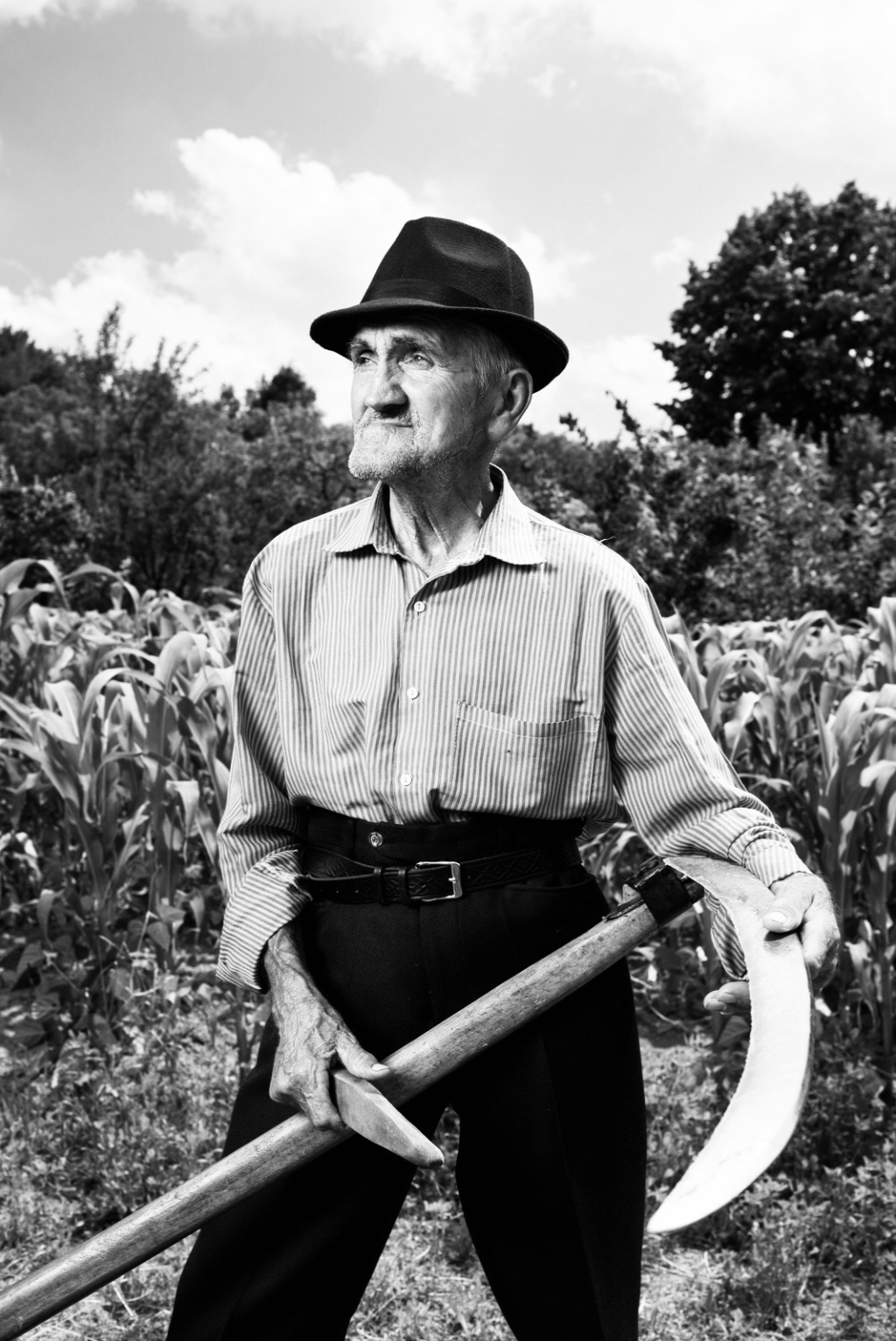



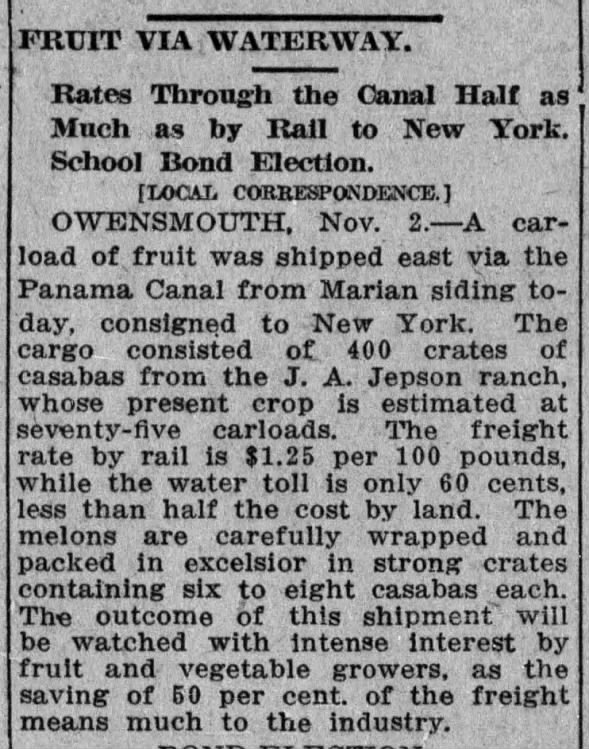






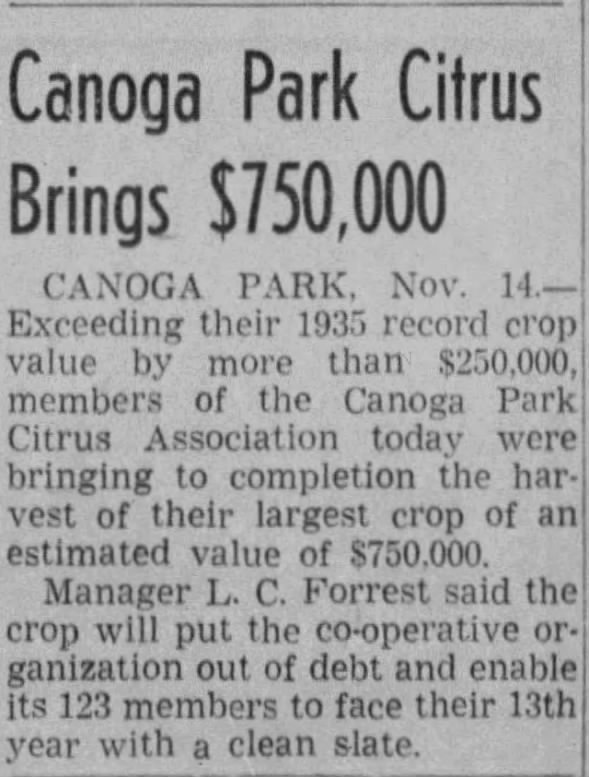











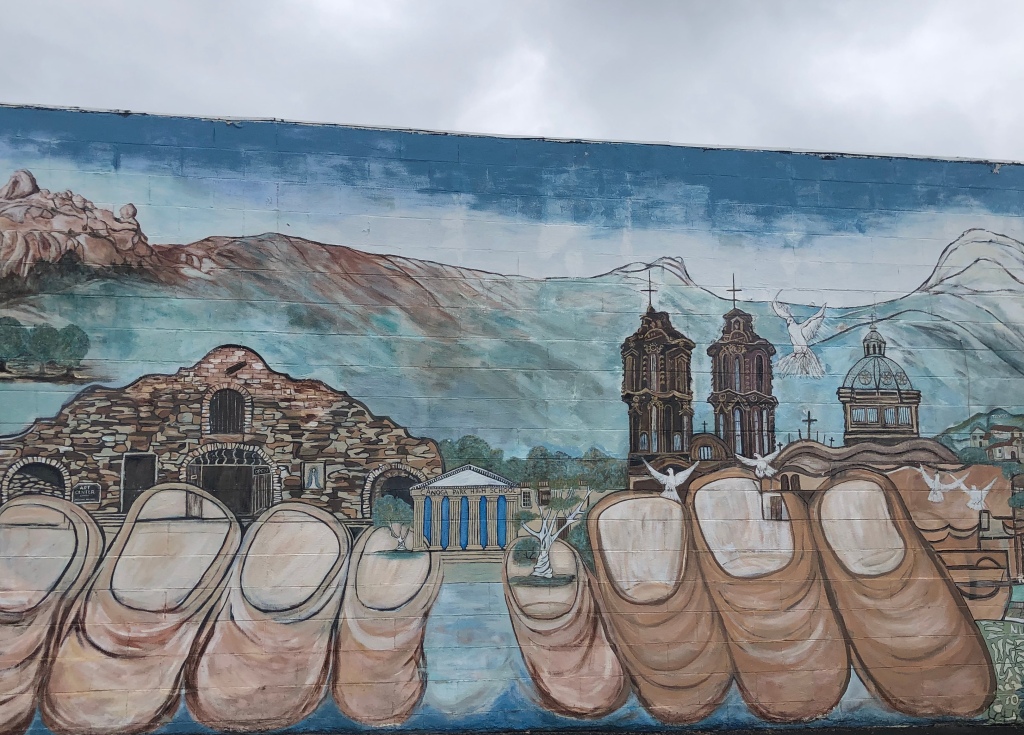

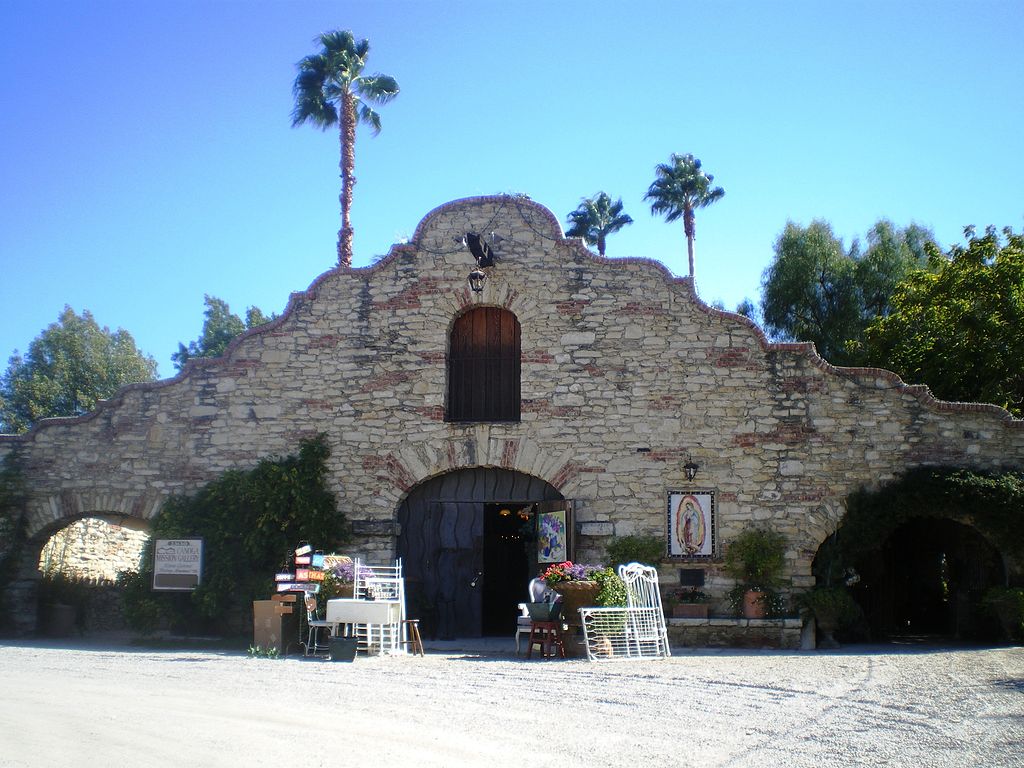
Leave a comment